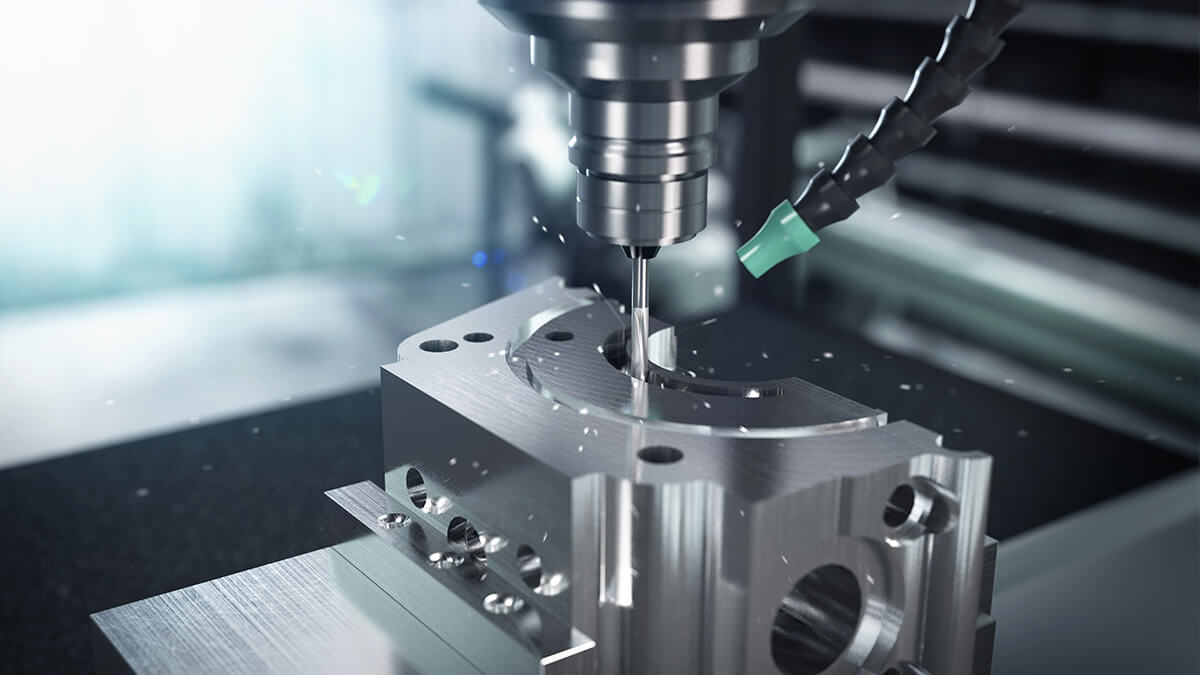The integration of additive manufacturing (AM) and subtractive milling processes has emerged as a transformative manufacturing process known as hybrid milling. This technique combines the strengths of both 3D printing and traditional subtractive milling, opening up new possibilities and diverse applications for creating complex geometries with improved material efficiency.
Hybrid Milling: Combined Additive and Subtractive Processes
Additive manufacturing, commonly referred to as 3D printing, and subtractive milling have traditionally been distinct processes with their own set of advantages and limitations. While additive manufacturing excels in creating intricate and complex shapes layer by layer, subtractive milling is proficient in precision machining and material removal. The synergy between these two processes lies in their complementary nature, making it possible to seamlessly integrates the benefits of both in single hybrid milling machine.
Precision and Complexity
Additive manufacturing enables the creation of complex geometries that might be challenging or impossible to achieve with subtractive methods alone. Hybrid milling combines the precision of subtractive processes with the intricate detailing capabilities of additive manufacturing.
Material Efficiency
Additive processes reduce material waste by building structures layer by layer, while subtractive milling ensures precise shaping with minimal material removal. This synergy optimizes material efficiency, a critical aspect of sustainable manufacturing practices.
Enhanced Capabilities
Hybrid machines offer the flexibility to switch seamlessly between additive and subtractive processes. Advanced software controls and synchronizes these processes, enabling the production of components with complex geometries and unmatched precision and efficiency.
Customization, Versatility, and Diverse Applications
Industries such as aerospace, automotive, and medical manufacturing benefit from the ability to create parts with internal structures, undercuts, and fine details that traditional manufacturing methods struggle to achieve. Lightweight automotive components with complex internal channels allow for improved fuel efficiency. Medical implants with patient-specific geometries enhance their performance and compatibility. The hybrid approach also enables the integration of dissimilar materials in a single component, optimizing material usage and minimizing waste.
While milling machines tailored for the automotive industry are designed to produce precisely machined components for engines and transmissions, milling machines used in the production of consumer electronics focus on small, high-precision parts.
Cutting-Edge Developments in Materials, Tools, and Techniques
Advanced materials, including high-performance alloys and composite materials, are pushing the boundaries of what can be achieved in terms of the strength and durability of machined parts. Innovative cutting tools, such as diamond-coated end mills and high-speed machining tools, contribute to improved precision and efficiency.
With the integration of artificial intelligence (AI) and machine learning into milling machines, smart algorithms can optimize toolpaths, predict tool wear, and adjust machining parameters in real-time. This not only improves process control but also enhances efficiency and quality assurance while reducing downtime.
Adapting to Technological Changes
Businesses looking to adopt hybrid manufacturing must be proactive by investing in training programs for operators and engineers to familiarize them with the capabilities of hybrid machines. Additionally, staying abreast of advancements in materials and technologies ensures that manufacturers can leverage the latest innovations to remain competitive. The future of Hybrid Milling holds the promise of leading the way in shaping the future of manufacturing.







.png)






